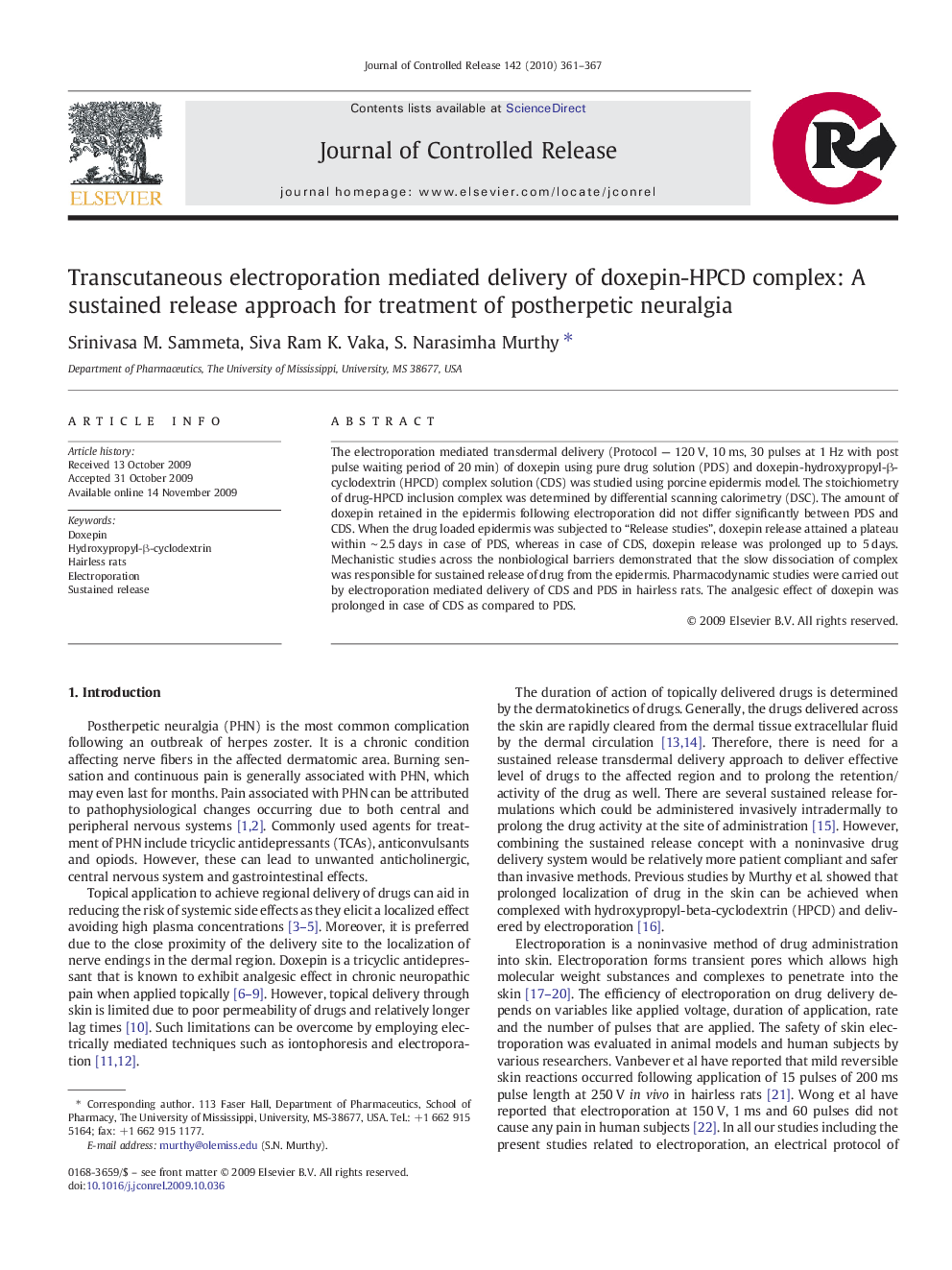| Article ID | Journal | Published Year | Pages | File Type |
|---|---|---|---|---|
| 1425676 | Journal of Controlled Release | 2010 | 7 Pages |
The electroporation mediated transdermal delivery (Protocol — 120 V, 10 ms, 30 pulses at 1 Hz with post pulse waiting period of 20 min) of doxepin using pure drug solution (PDS) and doxepin-hydroxypropyl-β-cyclodextrin (HPCD) complex solution (CDS) was studied using porcine epidermis model. The stoichiometry of drug-HPCD inclusion complex was determined by differential scanning calorimetry (DSC). The amount of doxepin retained in the epidermis following electroporation did not differ significantly between PDS and CDS. When the drug loaded epidermis was subjected to “Release studies”, doxepin release attained a plateau within ∼ 2.5 days in case of PDS, whereas in case of CDS, doxepin release was prolonged up to 5 days. Mechanistic studies across the nonbiological barriers demonstrated that the slow dissociation of complex was responsible for sustained release of drug from the epidermis. Pharmacodynamic studies were carried out by electroporation mediated delivery of CDS and PDS in hairless rats. The analgesic effect of doxepin was prolonged in case of CDS as compared to PDS.
Graphical abstractFigure optionsDownload full-size imageDownload as PowerPoint slide
